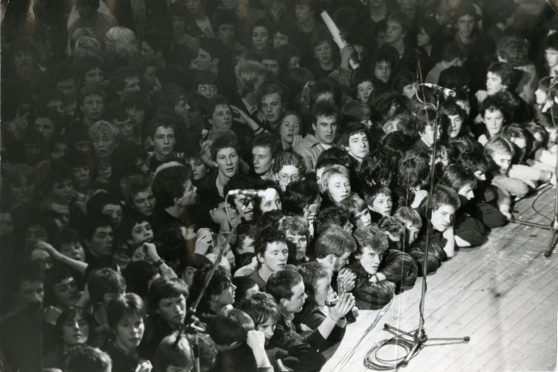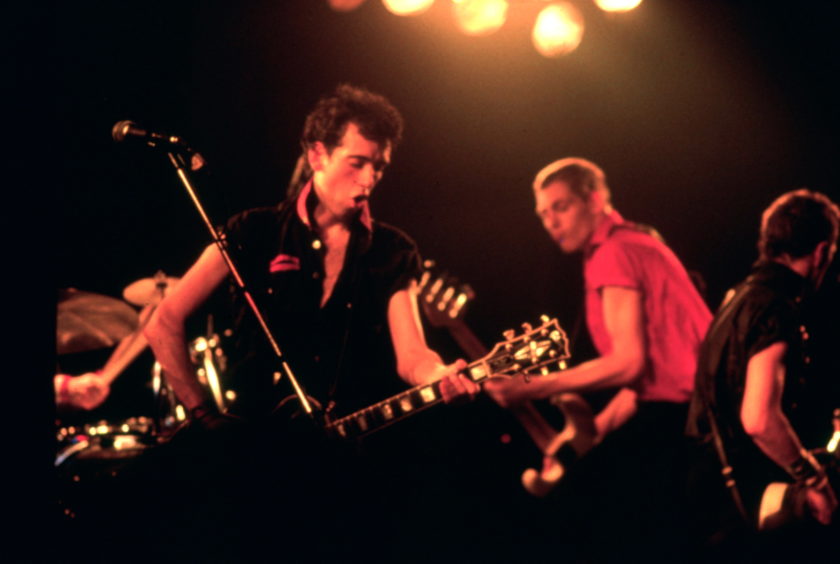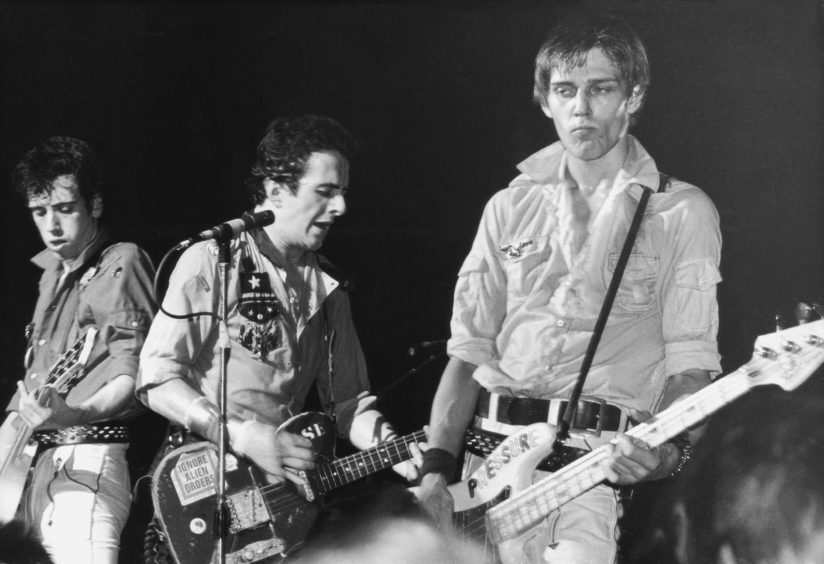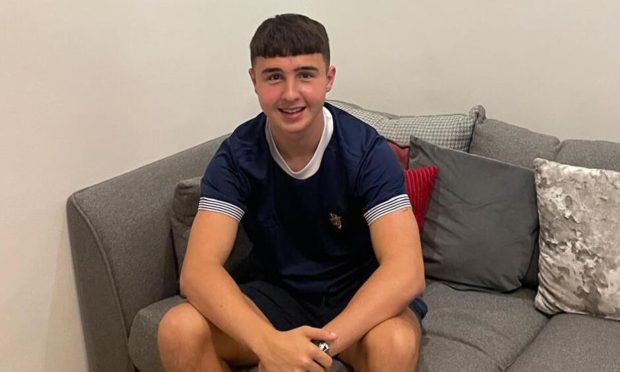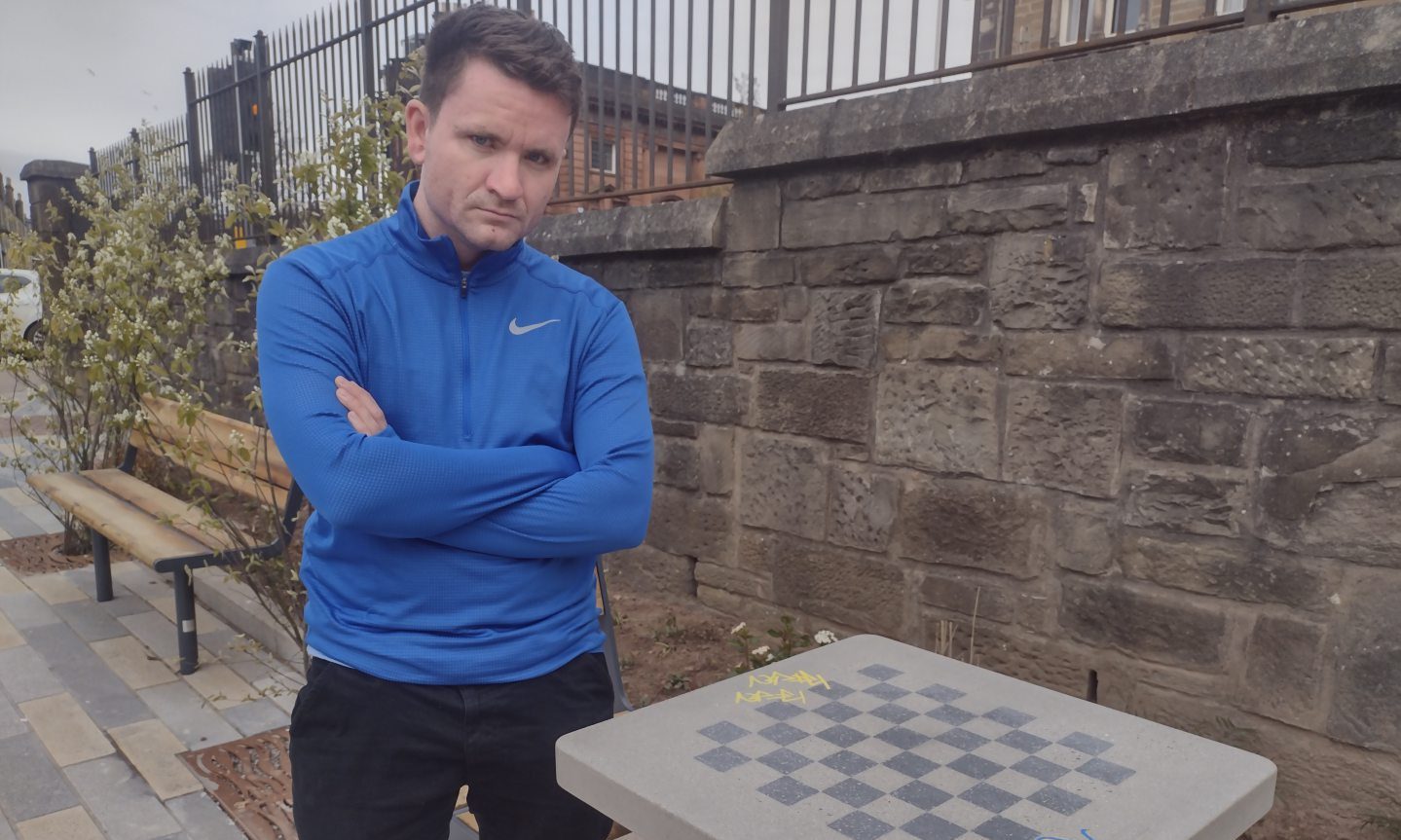It was the night punk legends The Clash took to the stage in Dundee in a hail of spit that looked like a snowstorm.
Dubbed in their heyday “The Only Band That Matters”, The Clash performed at the Caird Hall exactly 40 years ago with Mikey Dread as part of their ‘16 Tons’ tour of the UK.
At the time they were one of the biggest bands in the UK and tickets for the sold-out gig went for £3, £2.50 and £2.
The band arrived on stage to the sound of Tennessee Ernie Ford’s version of the song ‘16 Tons’ and had to tell the crowd at the front of the stage to stop spitting.
The origin of spitting at gigs apparently came from a concert performed by The Damned at which somebody threw a can of beer at drummer Rat Scabies, who grabbed him by the scruff of the neck and spat in his face.
Singer Joe Strummer vowed the band would never return to Dundee if the spitting continued. Not surprisingly, it stopped immediately.
The band went on to perform 24 songs in Dundee including I Fought The Law, London Calling and (White Man) In Hammersmith Palais.
They ended the show with White Riot which was somewhat ironic given how rowdy the atmosphere was throughout.
Mikey Dread had opened the show for The Clash in Dundee.
He had been invited over to the UK to tour with the band and the Dundee gig was one of his first performances.
The Jamaican reggae singer, who died in 2008, later spoke about the shock of seeing fans spitting at the band’s lead singer Joe Strummer.
He said: “This blew my mind.
“I hated the people spitting on Joe and I decided to fight if any of them tried that.
“They gave me a long black coat and I always stayed way at the back of the stage as I felt it was nasty for any human to show disrespect for gobbing on anyone.”
There was also a TV camera crew following the band around in Dundee at the time.
Footage still exists of Strummer leaving the Tay Hotel with his stereo.
Strummer and guitarist Mick Jones are also filmed hanging around the band’s van in Whitehall Crescent, ready to depart for their next gig.
Tayside Police were making their presence felt by keeping tabs on the band before they eventually left the city.
“And we could do well without it,” said Jones.
The spitting eventually did stop at the Dundee gig on January 18 – but The Clash never returned to the city.
